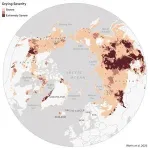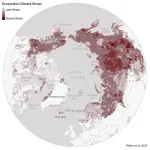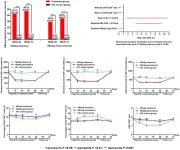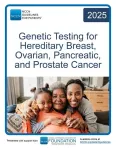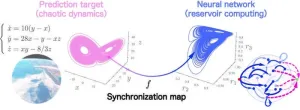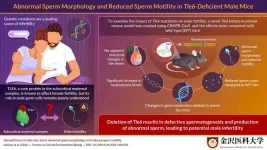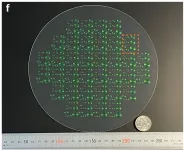(Press-News.org) The remains of nearly 200 animals found in Mexico’s Teotihuacán are helping reconstruct history.
The unearthing and significance of these remains, found in four chambers within the Moon Pyramid — dating back nearly 2,000 years — are central in Nawa Sugiyama’s new book, “Animal Matter: Ritual, Place, and Sovereignty at the Moon Pyramid of Teotihuacan,” published by Oxford University Press.
Teotihuacán, one of the first megacities of the Western Hemisphere and now a UNESCO World Heritage site, is situated about 30 miles northeast of Mexico City. It is home to one of the most important ceremonial landscapes in Mesoamerica and was once the most influential metropolis in the region. Nearly 2,000 years later, Sugiyama, an assistant professor of anthropology at UC Riverside, joined the team that uncovered four dedicatory chambers with nearly 200 animal remains.
In the largest chamber, measuring approximately 16-feet by 14-feet and known as burial 6, the team found 12 human remains along with over 100 animals, including 33 complete animal remains. This is believed to be one of the most abundant cases of mass animal sacrifice ever found in Teotihuacán and comparable only to those conducted by the Aztec empire over 1000 years later.
Animals were major protagonists in Teotihuacán since they were gifted, sacrificed, or venerated, Sugiyama said. Most were apex predators, meaning top predators within the food chain.
“That’s really interesting from the zooarchaeology standpoint because there’s a fundamental shift in the ways we know Indigenous communities understood these potent apex predators as active agents and mediators of the sky realm, the earth, and the underworld,” Sugiyama said. “They were also in conversation with and interacting, sometimes in very dangerous ways, with the human communities that were trying to make connections to — and have power over —these natural sources of power themselves.”
Studying the bones using multi-archaeometric methodologies, including zooarchaeology and isotopes (bone chemistry), Sugiyama uncovered many details of these animal’s lives, including sex, diet, age, and whether they were sacrificed dead or alive. One common denominator she found in their diet was maize, or corn; in addition to maize serving as the primary staple food in Mesoamerica, many civilizations believed humans were created from maize and the crop served an important process in cultural and religious practices.
“I don’t think it’s a mere coincidence, they were part of that process of creating a new politics, a new landscape, in which animals and humans coordinated one of the most ambitious ceremonial landscape constructions in ancient Mesoamerica,” Sugiyama said.
Analyzing animal matter has allowed Sugiyama to recreate parts of the lives of animals such as golden eagles, Mexican gray wolves, hawks, owls, and falcons. The team also found evidence of jaguars, pumas, wolves, and rattlesnakes.
Burial 6, the largest dedicatory chamber found, must have once been a “State spectacle,” witnessed by thousands of people, Sugiyama said. Sacrifices were government-sanctioned ritual performances staged at the heart of the Moon Pyramid. Teotihuacán thrived between 100 B.C. and 650 A.D., more than 1,000 years before the eminent Aztec civilization settled in. At its height, 100,000 people inhabited the metropolis.
One of the stories lifted from the soils of ancient Teotihuacán is the importance of the golden eagle, an animal still held in high regard today.
Sugiyama’s unearthing of 18 golden eagles in burial 6, representing one for each of the 18 months in Teotihuacán’s 365-day calendar, allows her to reimagine what the dedicatory ceremony would have looked like nearly 2,000 years ago. Sugiyama suggests the birds were carried by State officials on their forearm or shoulder (or some in captivity) through Teotihuacán’s main corridor leading to the endpoint, the Moon Pyramid, known as the Calzada de los Muertos or Avenue of the Dead.
Today, golden eagles are still incorporated in national customs, such as the annual Mexican Independence Parade when a Mexican cadet parades to the city’s federal building, known as Zócalo, with a golden eagle standing on his forearm.
“We are able to see the matter in which ancient Teotihuacanos materialized, felt, heard, created space, and understood their cosmos directly through the messages that are provided to us archeologists through the material remains of the bones that are speaking to us 2,000 years later,” Sugiyama said.
More on Nawa Sugiyama’s summer excavation work in Teotihuacán (story, photos, and video).
END
MEXICO: How animals, people, and rituals created Teotihuacán
Discovery of nearly 200 animals remains is among the most abundant mass cases of animal sacrifices found in ancient metropolis
2025-01-16
ELSE PRESS RELEASES FROM THIS DATE:
The role of political partisanship and moral beliefs in leadership selection
2025-01-16
New research forthcoming in Social Psychological and Personality Science illuminates why liberals and conservatives often support different types of leaders. The study shows that these preferences stem from differences in moral priorities rather than mere partisan bias.
"This research helps explain why people across the political spectrum often support such different types of leaders," explains lead researcher Harrison Miller, of Florida State University. "Rather than simply attributing these differences to political bias, ...
Parental favoritism isn't a myth
2025-01-16
WASHINGTON -- If you’ve ever wondered whether your parents secretly had a favorite child, they might have. Parents may be more inclined to confer the “favorite child award” to daughters and children who are agreeable and conscientious, according to research published by the American Psychological Association.
“For decades, researchers have known that differential treatment from parents can have lasting consequences for children,” said lead author Alexander Jensen, PhD, an associate professor at Brigham Young University. “This study helps us understand which children are more likely to be on the receiving end of favoritism, which can ...
Arctic hotspots study reveals areas of climate stress in Northern Alaska, Siberia
2025-01-16
Ecological warning lights have blinked on across the Arctic over the last 40 years, according to new research, and many of the fastest-changing areas are clustered in Siberia, the Canadian Northwest Territories, and Alaska. The analysis of the rapidly warming Arctic-boreal region, published in Geophysical Research Letters this week, provides a zoomed-in picture of ecosystems experiencing some of the fastest and most extreme climate changes on Earth.
Many of the most climate-stressed areas featured permafrost, or ground that stays frozen year-round, and experienced both severe warming and drying ...
Mount Sinai study finds wearable devices can detect and predict inflammatory bowel disease flare-ups
2025-01-16
Wearable devices can identify, differentiate, and predict flare-ups, or the worsening of symptoms and inflammation, in inflammatory bowel disease (IBD), Mount Sinai researchers have shown in a first-of-its-kind study.
The findings, published in the journal Gastroenterology on January 16, suggest that wearable technology can predict the subsequent development of flares in IBD, enabling continuous disease monitoring through widely available commercial devices.
“Current disease-monitoring methods rely on patients directly interacting with ...
Peripheral blood CD4+/CD8+ t cell ratio predicts HBsAg clearance in inactive HBsAg carriers treated with peginterferon alpha
2025-01-16
Background and Aims
T lymphocytes play a pivotal role in resolving hepatitis B virus infection. This study aimed to investigate the dynamics of peripheral blood T lymphocyte subsets during peginterferon alpha (peg-IFN-α) therapy and their association with hepatitis B surface antigen (HBsAg) clearance in inactive HBsAg carriers (IHCs).
Methods
This prospective observational study enrolled 197 IHCs treated with peg-IFNα-2a/2b for 48 weeks and followed for 24 weeks (treatment group), and 221 IHCs who were regularly monitored for 72 weeks without treatment (IHC control group). ...
MIT Press’s Direct to Open reaches annual funding goal for 2025, opens access to 80 new monographs
2025-01-16
January 16, 2024 - The MIT Press is pleased to announce that Direct to Open (D2O) has reached its full funding goal for 2025 and will open access to 80 new monographs and edited book collections in the spring and fall publishing seasons.
“It has been one of the greatest privileges of my career to contribute to this program and demonstrate that our academic community can unite to publish high-quality open access monographs at scale,” said Amy Harris, Senior Manager of Library Relations ...
New NCCN patient resource shares latest understanding of genetic testing to guide patient decision making
2025-01-16
PLYMOUTH MEETING, PA [January 16, 2025] — Today, the National Comprehensive Cancer Network® (NCCN®)—an alliance of leading cancer centers—published a new resource to inform people about the latest recommendations around hereditary and familial cancer risk. This essential guide is based on the latest evidence and expert consensus in the rapidly advancing field of cancer genetics. It provides guidance on how best to assess, and test for, inherited genetic mutations that can raise the ...
Synchronization in neural nets: Mathematical insight into neuron readout drives significant improvements in prediction accuracy
2025-01-16
Reservoir computing (RC) is a powerful machine learning module designed to handle tasks involving time-based or sequential data, like tracking patterns over time or analyzing sequences. It is widely used in areas such as finance, robotics, speech recognition, weather forecasting, natural language processing, and predicting complex nonlinear dynamical systems. What sets RC apart is its efficiency—it delivers powerful results with much lower training costs compared to other methods.
RC uses a fixed, randomly connected network layer, known as the reservoir, to turn input data into a more complex representation. ...
TLE6 identified as a protein associated with infertility in male mice
2025-01-16
Infertility is a major global challenge associated with physiological and psychological impact. Genetic mutations that affect early embryonic development, oocyte (egg cell) maturation, and fertilization have recently been studied as causes of infertility. One of the most well-studied causes of early embryonic infertility is mutations in the subcortical maternal complex (SCMC)-related genes.
SCMC participates in embryo development and cleavage by maintaining the structure of the egg cytoplasm and recruiting proteins that assist proper embryo formation. SCMC is composed of multiple proteins, of which the transducin-like ...
Thin lenses have a bright future
2025-01-16
Paper-thin optical lenses simple enough to mass produce like microchips could enable a new generation of compact optical devices. A team with researchers at the University of Tokyo and JSR Corp. fabricated and tested flat lenses called Fresnel zone plates (FZPs), but did so for the first time using only common semiconductor manufacturing equipment, the i-line stepper, for the first time. These flat lenses currently lack the efficiency of in-production lenses, but have the potential to reshape optics for industries ranging from astronomy to health care and consumer electronics.
Flat lenses, such as metalenses, exist, but they come with hefty price tags ...
LAST 30 PRESS RELEASES:
Making lighter work of calculating fluid and heat flow
Normalizing blood sugar can halve heart attack risk
Lowering blood sugar cuts heart attack risk in people with prediabetes
Study links genetic variants to risk of blinding eye disease in premature infants
Non-opioid ‘pain sponge’ therapy halts cartilage degeneration and relieves chronic pain
AI can pick up cultural values by mimicking how kids learn
China’s ecological redlines offer fast track to 30 x 30 global conservation goal
Invisible indoor threats: emerging household contaminants and their growing risks to human health
Adding antibody treatment to chemo boosts outcomes for children with rare cancer
Germline pathogenic variants among women without a history of breast cancer
Tanning beds triple melanoma risk, potentially causing broad DNA damage
Unique bond identified as key to viral infection speed
Indoor tanning makes youthful skin much older on a genetic level
Mouse model sheds new light on the causes and potential solutions to human GI problems linked to muscular dystrophy
The Journal of Nuclear Medicine ahead-of-print tip sheet: December 12, 2025
Smarter tools for peering into the microscopic world
Applications open for funding to conduct research in the Kinsey Institute archives
Global measure underestimates the severity of food insecurity
Child survivors of critical illness are missing out on timely follow up care
Risk-based vs annual breast cancer screening / the WISDOM randomized clinical trial
University of Toronto launches Electric Vehicle Innovation Ontario to accelerate advanced EV technologies and build Canada’s innovation advantage
Early relapse predicts poor outcomes in aggressive blood cancer
American College of Lifestyle Medicine applauds two CMS models aligned with lifestyle medicine practice and reimbursement
Clinical trial finds cannabis use not a barrier to quitting nicotine vaping
Supplemental nutrition assistance program policies and food insecurity
Switching immune cells to “night mode” could limit damage after a heart attack, study suggests
URI-based Global RIghts Project report spotlights continued troubling trends in worldwide inhumane treatment
Neutrophils are less aggressive at night, explaining why nighttime heart attacks cause less damage than daytime events
Menopausal hormone therapy may not pose breast cancer risk for women with BRCA mutations
Mobile health tool may improve quality of life for adolescent and young adult breast cancer survivors
[Press-News.org] MEXICO: How animals, people, and rituals created TeotihuacánDiscovery of nearly 200 animals remains is among the most abundant mass cases of animal sacrifices found in ancient metropolis


